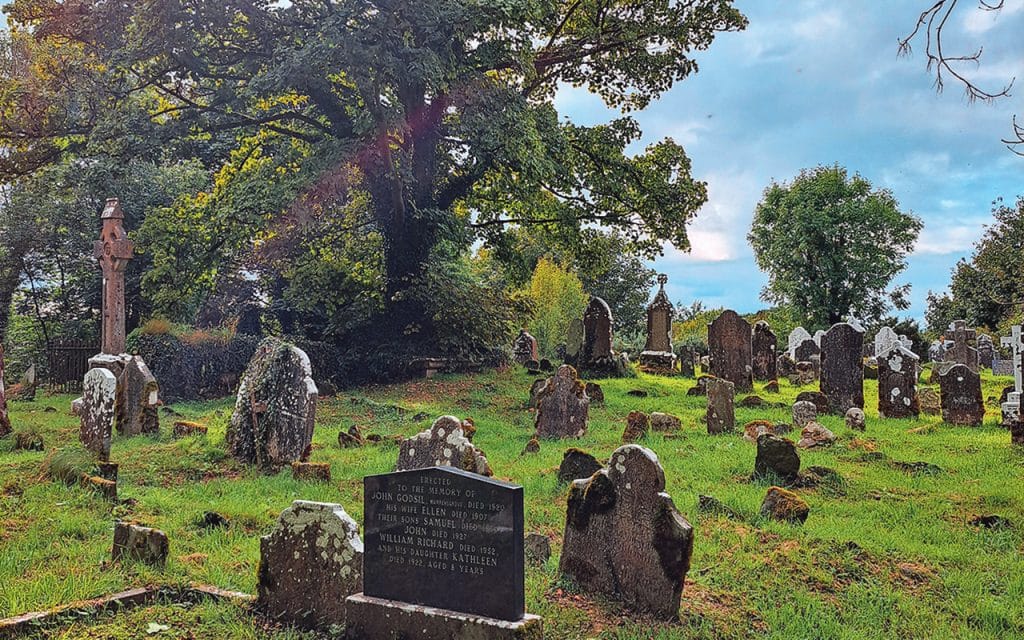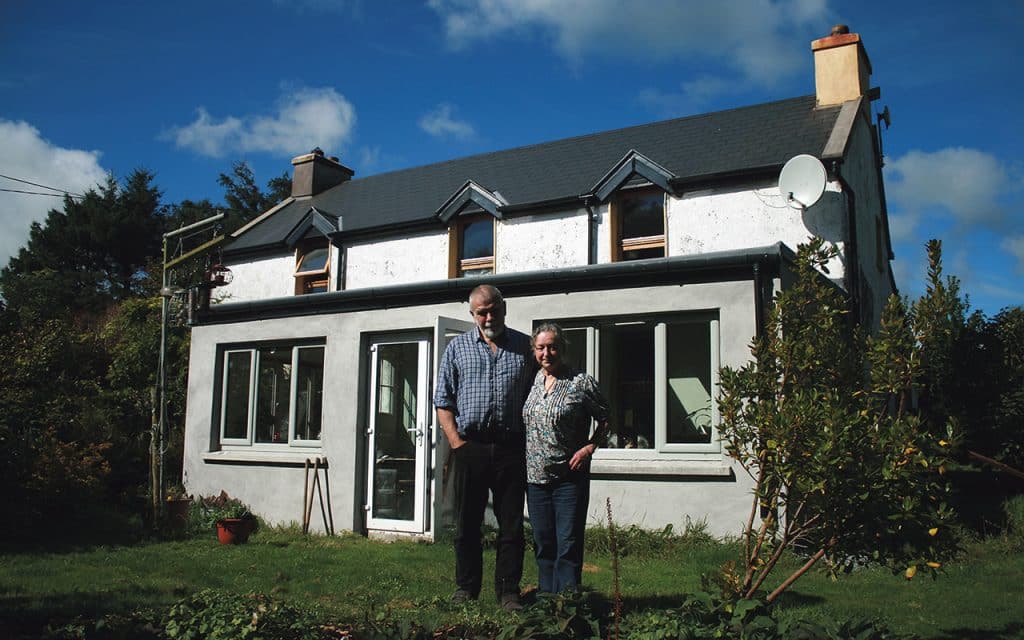The Save Murragh Action Group, a community group opposed to a sand and gravel quarry planned adjacent to Bandon River in Murray, Enniskeane looks to the past this month to protect the future, in part one of a two-part article highlighting the heritage of the local area.

Most of us probably go about our business without giving our heritage too much thought. But it is actually a treasure, an inheritance which leads us back to our ancestors, and the fabric on which legends and tales are woven.
In the townland of Murragh and its surrounds, we are lucky enough to have the beautiful river Bandon. Cork’s third largest river rises in Nowen Hill or Cnoc na nAbhann, just west of Dunmanway in the Shehy mountains and meets the sea at Kinsale. Our ancestors named the river ‘Ban-Dea’, a Goddess, reverencing it’s importance in their lives, and if she could talk, what tales she could tell…
Today, south of the river, Corran Hill can be identified by the transmitter masts on its summit, which keep the local populace connected to the 21st century. However, over a thousand years ago, in 858 AD, it was the scene of a huge battle. The men of Munster refused to hand over hostages to the High King Malachy, seated in Tara Co. Meath. He was most displeased, and in response he sent a military force to Munster culminating in a gathering of 60,000 men. The battle was fought at Corran Hill, by a multicultural force of Celts, Danes and Norwegian warriors.
Malachy won by the way.
Today this picturesque hill gives no clue to the past violence, but its name Corran, or Cnoc Lugdach, is a clue to an earlier High King of Ireland.
Lugaid Mac Con was descended from the old Celtic Milesians. He held the High Kingship at Tara for 30 years in AD 195-225, and returned to Cork after he was deposed, to make peace with his stepfather Ailioll Olum who became King of Munster. Things did not go according to plan, as Ailioll was not the forgiving type. He instructed his poet Fergus Mac Commain, to kill his stepson Mac Con. Some sources say he was speared by this assassin close to the river in the Murragh area. His descendants include the names O’Driscoll, O’Leary, Coffey, Hennessy and Flynn. On top of Corran Hill, there was an ancient cairn, or burial mound. It was a stone chamber covered in a mound of stone and earth. History tells us that in 1838 an urn was found by the Norris brothers inside the chamber under the mound, but a man called Barret snatched the urn from them.The thief reached into the urn expecting to find gold…but the urn contained the remains of Lugaid Mac Con – historical gold indeed!
The urn is now in the Belfast Museum, but nothing remains of the cairn. However in the 1950s a ‘Holy Cross’ was erected on the site by the 20th century descendants of the ancients, to mark the Christian power of the greatest King of Kings over the old High King. Today it is a local place of pilgrimage.
During the 1930s a record of folklore was collected from school children around Ireland. The Duchas Schools Collection makes fascinating reading. One pupil from Knocks, told the story of a giant called Magun who lived by Corran Hill. He buried a pot of gold in the vicinity, and foretold that it would be found by someone from the parish. This tale no doubt informed the thief who plunged his hand into the urn expecting gold! Certainly the story has echoes of the old king Mac Conn, a giant of local history.
A few kilometres away, on the northern bank of the river, is the old graveyard and church of Murragh. A large part of the site has been lost to erosion (more about that later), but it also enclosed an iron age tumulus. This was signifiant, and would have been the burial place of a high status individual. In 1843 the Cork antiquarian John Windele, wrote of his visit to the monument, which then, 181 years ago was still intact. He recorded that it was 81 feet long and 15 feet high. Local legend has it that the great Fianna warrior Diarmuid ui Duibnhe, the lover of Grainne, daughter of the High King Cormac Mac Airt was interred there. Of course, this is not the only place to lay claim to Diarmuids’s remains – although there is some compelling evidence to suggest it may be true. The fact that it survived in the collective memory for so long, indicates that the place had a significance of some kind. Certainly this area is associated with kings and heroes!
Today the tumulus is largely destroyed, but just maybe the remains of a great Fianna warrior are still lying there!
Interestingly, a recent archaeological survey of fields close to the river and adjacent to Murragh graveyard and tumulus, brought to light traces of ancient settlements, including a partial prehistoric ring ditch or burial place, with a 20-metre diameter. Part of a circular enclosure for habitation, as well as two Fulacht Fiadh, which were outdoor kitchens where rocks heated by fire were placed in a water pit, to boil the water for cooking meat. Also found was a figure of eight corn kiln and a ‘possible’ grinding stone. Who knows what else will be discovered over time?
Certainly there are many footsteps leading back to the past in this place.
In the next article, we will look at the early monastic tradition in the area, old bridges, industries, and a gory tale of one long lost mansion.


